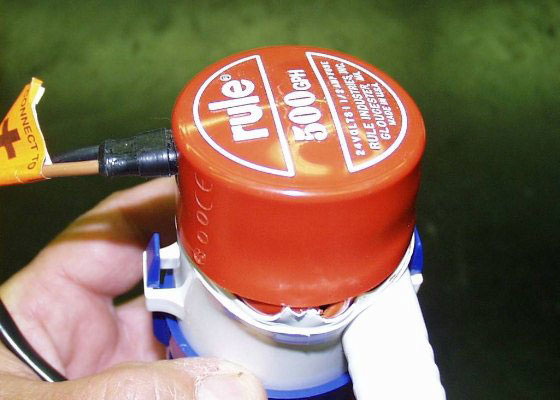Why Shouldn’t I Run My Bilge Pump Dry?
Rubber shaft seals need fluid for lubrication and cooling. Dried-out, damaged seals and water intrusion are common causes of failure in bilge pumps.
October 17, 2014
Question: Recently I installed a new higher-output bilge pump in my boat. The photo I sent along shows the exact unit. I have a question about the very last statement made on the label on the pump: “Do not run dry."

The last sentence on this pump label reads, "Do not run dry." This is sound advice. Avoid cycling your bilge pump if there's no water in the bilge to lubricate it.
Can you explain why this statement is there? I ask because one of my routines when I get on board my boat is to switch the master switch for my bilge pump to manual mode just to make sure my pump still works. Sometimes when I do this there really isn’t any water in the bilge. What harm am I causing?
Answer: Good question and a really obscure answer. I suspect that Johnson Pump has learned, just as others have, that running these pumps dry can ruin the seal on the pump motor’s armature shaft, ultimately allowing water into the motor housing, thereby ruining the motor.
The motor shaft is probably sealed with a rubber lip seal. This type of seal relies heavily on whatever fluid it's sealing, whether oil or water, to lubricate and cool the very fine “lip” that rides against the metal shaft of the motor. Again, running the motor in the absence of fluid -- water, in this case -- can cause rapid damage to the seal as it will not be lubricated or cooled. Once water gets past the seal and into the motor housing it won’t be long before the motor short-circuits internally and fails completely. This is good advice on the part of Johnson Pump. Other manufacturers should post this same warning as this is a fairly common failure point for bilge pumps.












